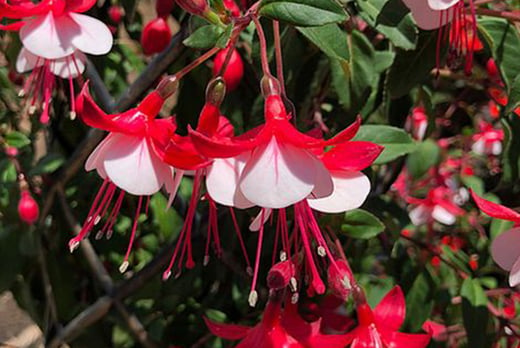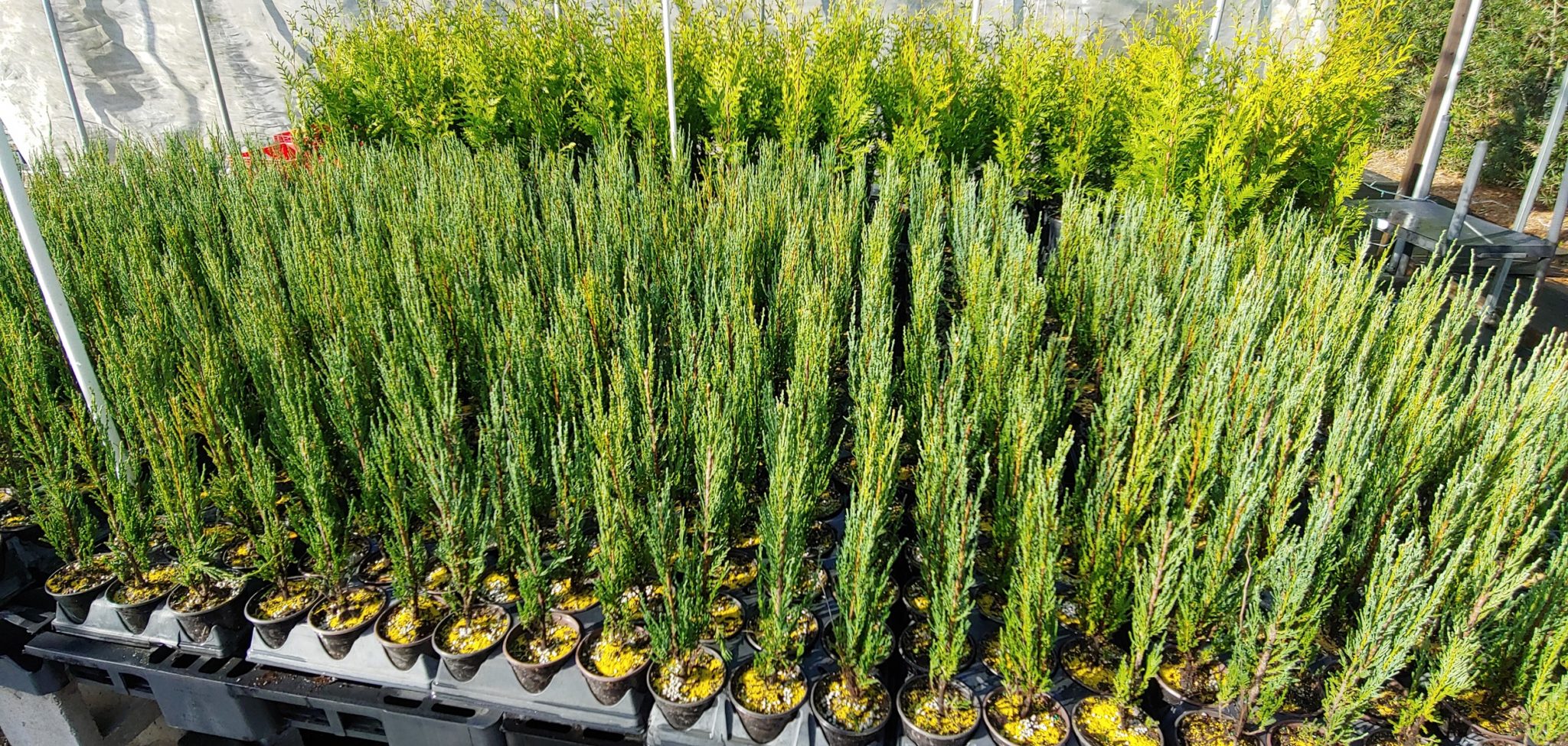

Irrigate newly planted specimens every week or two until roots have developed sufficiently, and keep plants moist during extreme drought and heat spells. They are more likely to suffer from overwatering and resulting diseases than they are from underwatering. In most regions, junipers need little to no supplemental water once established. Spread fertilizer around the root zone according to instructions and water in thoroughly. If desired, apply an all-purpose slow-release fertilizer in early spring. When planted in optimal conditions, junipers need little to no supplemental fertilizer. Tolerant of most soil types, junipers prefer slightly acidic, organically rich soil with good drainage, as roots can rot in standing water. Cutting branches past live growth into dead zones can result in permanent bare gaps. Severe pruning of overgrown specimens can be a problem, as older growth at the center of the plant doesn’t regenerate. Keep up with light pruning as young plants grow to keep them compact and healthy. In early spring, cut out any dead branches, trim back errant growth and lightly shape as needed. Junipers need little to no pruning so that plants retain their natural form. See more Common Poisonous Plants for Dogs and Cats.Ĭlose-up of Montana Moss® foliage. Contact your local poison control or veterinarian if your pet exhibits any symptoms. Consuming large amounts of the berries can result in aborted pregnancy in dogs. Ingestion is rarely if ever fatal, but can cause stomach upset, vomiting, diarrhea, and (in extreme cases) kidney problems. Juniper berries, needles, and stems can be mildly toxic to dogs and cats if eaten, though most pets will leave plants alone due to the bitter taste. Other ornamental attributes may include attractive bark and twisted branching. The resinous sap is combustible, making them a poor choice in areas with high fire danger. Juniper berries are also a food source for songbirds and other wildlife. Female cones are aromatic and used as a spice and for medicinal purposes, but are most often used to flavor gin. Pollination time varies, with some varieties producing pollen several times a year. Female cones develop a fleshy berry-like appearance, starting out green and maturing to blue, while males more closely resemble miniature pine cones that are yellow or tan in color. Male and female cones are both present on some varieties, making them self-pollinating, while others occur as separate male and female plants, which require a partner plant in order to achieve pollination. Tiny inconspicuous yellow or green flowers appear in spring. Foliage, which softens with age, comes in varying hues of green, as well as blue, silver, and gold, some acquiring bronze or other tones in winter. Color and characteristics:Įvergreen leaves have prickly needle-like new growth, maturing to a flattened scale-like appearance.

#Skyrocket plant full
Nearly all varieties do best in full sun, though some benefit from afternoon shade in hotter climates. Upright, spreading or weeping habit, 6 inches to 130 feet tall and 1 to 25 feet wide Exposure: Ipomopsis arizonica is a very similar species this has a shorter corolla tube, and stamens that do not project beyond the corolla lobes.2-10, depending on variety Height/Spread: The plant requires long-tongued species for pollination, such as hummingbirds. In some locations the flower color varies, to include shades of pink, orange and (least common) yellow. The tall, thin, unbranched stems are mostly leafless foliage is concentrated around the base. The outer surfaces of the bracts become purplish as the flower matures.

The flower is supported by five hairy, pointed, green bracts, each topped by a short spine. The inner surface of the petals often has a mottled yellow or white pattern.

Inside are a few red stamens and bright yellow anthers, projecting beyond the lobes. The trumpet-shaped flowers are especially long (around one inch) and thin, and the corolla opens out at the tip to five pointed lobes, forming a star shape when viewed end-on. Skyrocket, or ipomopsis aggregata, is a common wildflower all across the West, found in a range of habitats including canyons, sagebrush plains, pinyon-juniper woodland, coniferous forests and open mountain slopes seven subspecies are recognized, differing in such aspects as pollen color and the shape of the leaf tips.


 0 kommentar(er)
0 kommentar(er)
